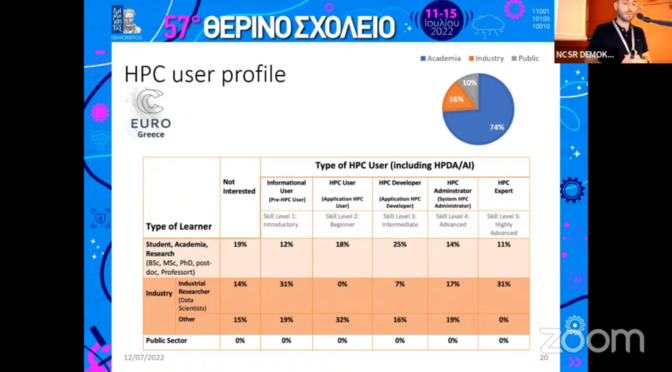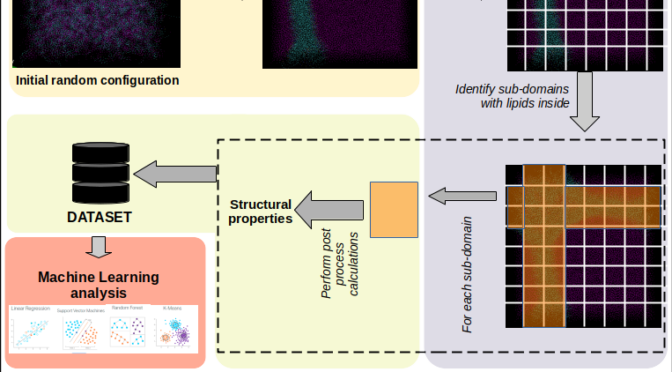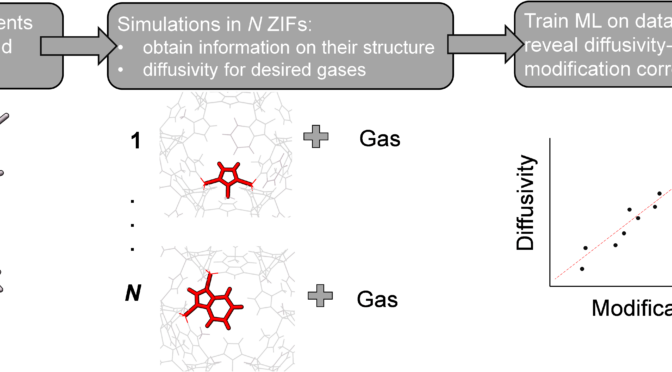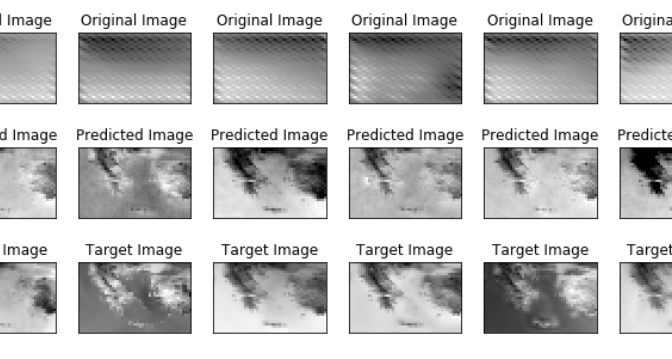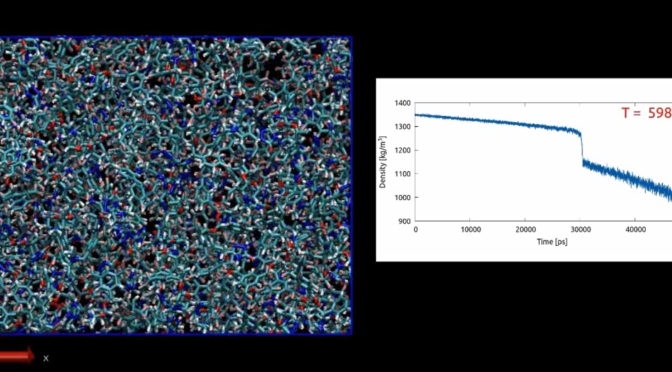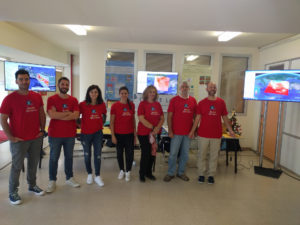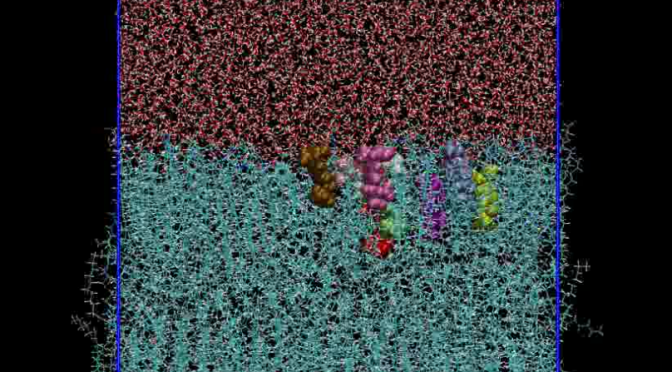During the 57th Summer School of NCSR Demokritos I was honored to present an introduction to HPC history and architectures, alongside some results of EUROCC project.
All posts by skarozis
Green deal grant
I am very proud to be part of the TransformAr project that recently was get funded from EU Green Deal. TransformAr aims to develop and demonstrate solutions and pathways to achieve rapid and far-reaching transformational adaptation across the EU.
As project management from NCSRD side, me and the laboratory team will work to support the greek demonstrator (Egaleo municipality) and provide solution in the final outcome of the project.
Introduction to a data-driven analysis tool of Molecular Dynamics self-assembled lipid bilayer trajectories
Karozis S., Kanourgiakis M.
The in-silico studies reported so far for the representation of the structure and the evaluation of the transport properties of lipid bilayers are in general based on assumptions and approaches that simplify the real system and problem. Nevertheless, the structure and organization of the lipid bilayers strongly affect transport coefficients. This is a quite important observation, showing that simulations can be meaningful only when addressing realistic structures, mimicking the actual lipid phase system as elaborately as possible.
In the current study, a computational tool is presented that uses Molecular Dynamics simulations (MD) results of spontaneous self-assembly lipid bilayer structures with different oriented and shaped lipid bilayer, in order to analyze the resulted trajectories, creating a Machine Learning (ML) ready dataset that can be used in a series of ML algorithms, depending the case. The development of the tool is in the alpha stage, where tests are performed, with a planned public release in free and open source. The tool’s development state is an alpha version, where tests and debugging are performed. As future work, the outcome and results of the a case study is planned to be used, alongside the first public release of the code under free and open source license. The tool is hosted at: https://mssg.ipta.demokritos.gr/gitlab/skarozis/toobba
AI in Natural Sciences and Technology (AINST2020) proceeding
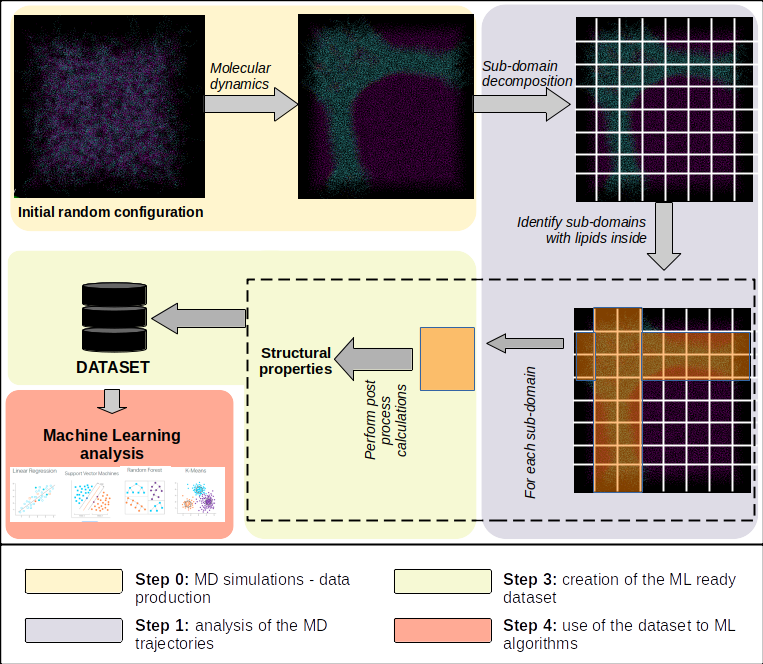
This research is co-financed by Greece and the European Union (European Social Fund - ESF) through the Operational Programme «Human Resources Development, Education and Lifelong Learning» in the context of the project "Reinforcement of Postdoctoral Researchers - 2nd Cycle" (MIS-5033021), implemented by the State Scholarships Foundation (IKY).
A Novel Machine Learning Model for the Accurate Design of Highly Selective Zeolitic-Imidazolate Frameworks
Krokidas P., Karozis S.
Zeolitic-imidazolate frameworks (ZIFs) have the potential to make highly selective membranes, due to their functionalization capabilities that can take place on the molecular level and affect considerably their microscopic properties. However, their application in gas separations is limited due to the lack of knowledge on the modification-properties correlation.
Our approach is based on the premise that the aperture connecting the cages of ZIFs controls the diffusion rate of guest species. In our recent works, we showed that the aperture’s size and flexibility can change, by replacing the organic linker, the metal center or the functional group of the framework. This in turn provides control over the diffusion-based selectivity of a given pair.1,2,3 This knowledge shapes a chemical basis which we used in a novel machine learning (ML) tool towards developing a complete modification/selectivity correlation for ZIFs, as shown schematically in Figure 1. We built numerous new ZIFs of finely discretized aperture sizes, by replacing various units, and simulated the diffusion of guest molecules of varying in size (He, H2 up to n-butane) in these structures, based on force fields developed based on density functional theory (DFT) calculations. The simulations account for the flexibility of the structure, to assess the framework’s response as a function of the gas penetrant’s size. Then we trained a supervised ML model on descriptors with physical (size and weight of the linkers; charge and length of the functional group) and chemical significance (ionic radius of the metal center and information on the metal-nitrogen bond), as well as information on the response of the framework upon a given gas penetrant’s presence.
Overall, our ML tool enables the prediction of the diffusivity of any gas on any ZIF structure and of the diffusivity of any gas in it without the need for molecular level simulations. The only information needed is basic chemical information from DFT calculations and the size of the gas penetrant. This approach can further promote the fast design of process tailored new ZIFs, by providing as input information only the desired diffusivity/selectivity of a given mixture.
1. Krokidas, P. et al. On the Efficient Separation of Gas Mixtures with the Mixed-Linker Zeolitic-Imidazolate Framework-7-8. ACS Appl. Mater. Interfaces 10, 39631–39644 (2018).
2. Krokidas, P., Moncho, S., Brothers, E. N., Castier, M. & Economou, I. G. Tailoring the gas separation efficiency of metal organic framework ZIF-8 through metal substitution: A computational study. Phys. Chem. Chem. Phys. 20, 4879–4892 (2018).
3. Krokidas, P., Moncho, S., Brothers, E. N. & Economou, I. G. Defining New Limits in Gas Separations Using Modified ZIF Systems. ACS Appl. Mater. Interfaces 12, 20536–20547 (2020).

Figure 1. Outline of our ML model for the fast design of top-performing ZIFs with desired performance.
A Deep Learning approach for spatial and time error correction of numerical weather prediction simulation data
Karozis S., Klampanos I.
Meteorological data are produced in various spatial and time sizes, depending on the application they will be used. The data are the result of Numerical Weather Prediction (NWP) simulations, e.g. the solution of mass & energy balance equations, concerning the fluids of the atmosphere. The uncertainty of the solution (time-series of domain) becomes higher as the prediction goes further to the future, thus, limiting the applicability of hour per hour resolution of such models, to 2 to 5 days ahead. In case of further in time predictions, statistical measurements (mean, man, min, etc) or indicators (tropical days or nights etc) of the whole day(s), week(s) or month(s), are taken into account.
In the current study, a deep learning approach, based on convolutional autoencoders, is explored in order to effectively correct the error of the simulation result in space and time domain, hence performing a result similar to statistical downscaling methods. The result can be used in NWP simulations as initial and boundary condition, thus, enabling more accurate longer prediction. The current study is an attempt to improve the global seasonal forecast (3-6 month ahead) data accuracy, for the Greece area, with a more reliable reanalysis dataset, that incorporates observations, satellite imaging etc and has better spatial resolution. Specifically the Meteo France Seasonal and the NCEP FNL data are utilized and they are publicly available from Copernicus platform and the National Oceanic and Atmospheric Administration (NOAA) accordingly. Moreover, external information is used as evidence transfer, concerning the time conditions (month, day, season) and the simulation characteristics (initialization of simulation). It is found that the convolutional autoencoders help improve the resolution of the seasonal data and successfully correct the error of NWP data for 6 month ahead forecasting. Interestingly, the season evidence yields the best results which indicates a seasonal (winter, spring, summer, autumn) dependence of the performance.

Computational Materials Science 2020
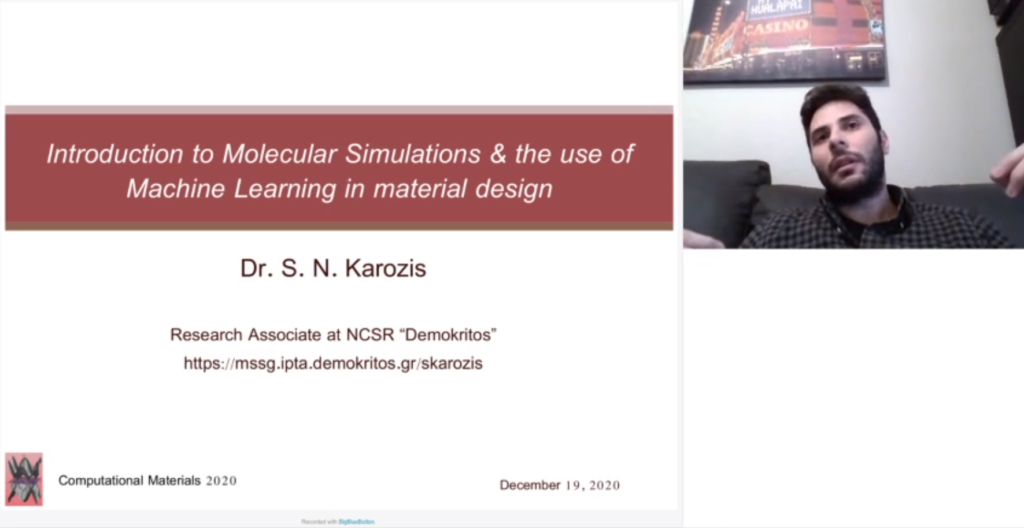
Video presentation: link
Computational Materials Science 2020
I was honored to present as plenary speaker at Computational Materials Science 2020 conference. The title of my presentation was “Introduction to Molecular Simulations and the use of Machine Learning in material design”. The goal of the presentation was to explain the basics on Molecular Simulations and motivate undergraduate students to use Machine Learning algorithms.
